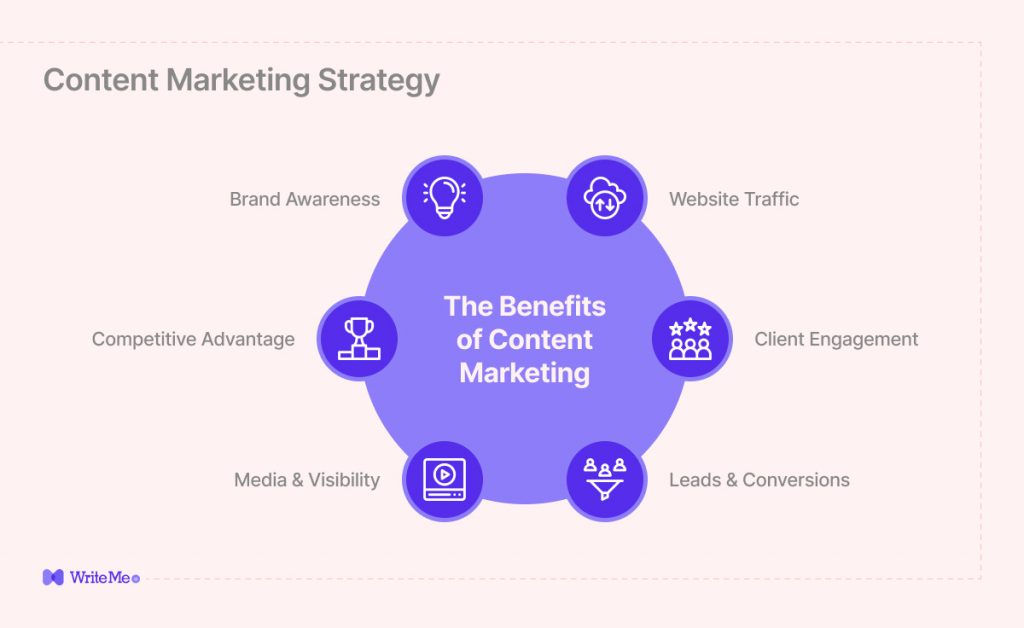Marketing is an ever-changing and dynamic field. The finest digital marketing techniques and successful marketing strategies evolve in tandem with consumer and technological changes. Therefore, every business needs a well-planned marketing strategy with well-defined milestones and targets. When you have the correct map, your chances of reaching your business’s goals are substantially better.
That implies that, while most of us are anxious to start our marketing efforts as soon as we decide to start a firm, we need to spend it on preparation to avoid wasting our limited money and energy on the incorrect things.
What is a Marketing Strategy?
Marketing strategy is a long-term, forward-thinking approach and overall game plan for any organization or corporation with the core aim of obtaining a sustained competitive advantage through understanding consumers’ requirements and desires.
A marketing strategy is a company’s overall game plan for reaching out to potential customers and converting them into clients of their products or services. It also includes the value proposition of the organization, critical brand message, statistics on the target audience and consumer demographics, and other high-level features.
Importance of Marketing Strategies
Marketers and e-commerce entrepreneurs can sometimes get caught in the weeds, in the bits and bytes. They lose sight of the company’s broader vision and long-term aims. They lose sight of the target demographic and the primary consumer pain points that their solution addresses. When this occurs, the precise strategies used by the company may lose their efficacy.
So, a marketing plan isn’t some dusty old document you place on the top shelf and then forget about. It is a critical procedure for deciding your company’s key goals and aims, as well as the means to reach them. That becomes the framework for everything you do to sell your product or service more effectively.
Best Marketing Strategies
Brand storytelling
Researchers in the neuroscience profession has proved that storytelling is the most effective approach to attracting people’s attention, embedding information in their minds, and emotionally connecting with them. The human brain is hardwired to want, seek out, and respond to the well-crafted narrative – this will not change.
If your website’s About page merely says what you do and whom you do it for, building an engaging narrative is a terrific approach to elevate that page and engage with your readers.
Digital PR
In 2020, the average amount of time spent on social media was 145 minutes (about 2 and a half hours) per day, up from 145 minutes (about 2 and a half hours) the previous year. Needless to say, individuals are spending more time than ever before on social media. And public relations experts are shifting their strategy from focusing exclusively on getting their stories published in news outlets’ publications to focus on driving traffic to their websites and social media accounts as well. [1]
To effectively sell your stories to journalists and news outlets nowadays, you must consider the material that performs well on their social media accounts and in their publications. Make sure your article is relevant and intriguing to the news outlet’s social audience before pitching it.
The Surround Sound
The more times a prospect sees an ad, the more effective it becomes. It’s also reasonable to argue that the more a marketing item is seen, the more effective it becomes.
This is a truth that has been mentioned several times in this post whenever the term “touchpoints” is mentioned.
The surround-sound technique expands on this concept by questioning the premise that your owned channels and assets are insufficient to set up meaningful brand awareness. You should also be present anywhere people look for things. As an example:
- Websites that supply reviews
- The social timelines of influential people as shown in the media they consume (articles, videos, podcasts)
Brand Extension
Large corporations often expand their brand to generate added items in areas where they do not have a market share. These activities are known as brand extensions, and they enable businesses to use their brand recognition and equity to generate added income streams.
Brand extensions that are closely related to the company’s main product or core brands have historically been the most successful. You may produce added items that people instinctively grasp the advantages of, even if they’ve never seen them on a shelf, by entering peripheral markets that can keep your brand’s distinctive connotations and perceived quality.
On the other hand, a corporation might misuse its brand, causing it to suffer. If they launch a product in a market that isn’t strongly related to their flagship product or core brand, audiences may associate the brand with negative associations, undermine its existing associations, and harm the perceived quality of its established items.
Video Marketing
Video has surpassed blogs and infographics as the most popular type of media in content strategy. There are two reasons for this:
- It is adaptable. You may upload videos to YouTube, post them on your blog, share them on social networks, and more.
- It’s a unique type of organic play. Google displays videos in its search results. YouTube is a search engine and the second most visited website behind Google.
- Participation is gratifying. Video usage continues to outpace television consumption, and it is more effective at transmitting the information.
As a result, people are asking for video material in addition to auditory content. And astute marketers are reaping the benefits of engagement and repurposability.
Community Building
When it comes to engagement, the last thing you want to do is develop content only to hear crickets when you advertise it. Building connections with prospects, users, customers, and other industry participants is one of the most effective strategies to improve engagement and brand exposure.
Many businesses are setting up digital communities through social media, online forums, and their own hosted networks/forums. Building relationships, giving back, and setting oneself up as an industry leader are all benefits of community management. It might be as basic as answering queries on Quora or starting a hashtag on Twitter, or as sophisticated as building an entire support network for your product.
Contextual Marketing
Contextual marketing is the technique of delivering users tailored website information based on their stage in the buyer’s journey. The idea is that if you can cut through the noise and deliver your website visitors the material that is most important to them, you will have a far better chance of grabbing their attention.
We may all agree that enhancing the prospect experience leads to higher efficacy, but how does contextual marketing work in practice?
For instance, you might employ dynamic CTAs to only display customers’ offers that are relevant to them. This reduces the quantity of irrelevant material users consume on your website and reduces banner blindness.
It may also imply the usage of smart forms to avoid repeatedly asking for the same information from website users who have reason to fill out several forms on your site.
Then, depending on the material they’ve previously consumed on your website, you may segment your database so that your leads receive email marketing that are at once relevant to their requirements.
All of this results in a personalized, personalized trip without the stress of approaching a salesperson.
Title Optimization
People will not be able to access the rest of your material until they click on the headline. That is why it is critical to have attention-grabbing names that resonate with your readers and push them to click.
You may boost your click-through rate by improving the efficacy of your titles (and, in effect, traffic). One method is to use tools such as this headline analyzer to evaluate what you can do to improve your headline.
Better, you can always examine your earlier blog entries to decide which headlines aren’t performing enough heavy lifting. You’ll be able to generate more traffic from that asset without a significant editorial lift if you improve the click-through rate.
Content Marketing
Finally, let’s speak about your content marketing approach. Content allows consumers to locate your goods or services online. Target your ideal buyer persona with content, gain new consumers, and please and keep your existing client base. To use content marketing effectively, organizations must generate unique content for each stage of their marketing or sales funnel.

Incorporate AI to Enhance Your Successful Marketing Strategies
It may be tough and time-consuming to consistently research and generate entertaining, relevant, and informative material. While researching top trends is useful, it takes almost as much time as writing. As previously said, AI (Artificial Intelligence) aids content marketers in creating material that is relevant to their target audience at each level of the marketing funnel. With WriteMe.Ai, content marketers can concentrate their efforts on producing the context rather than researching and analyzing it.
AI can also evaluate and compare data more quickly than humans. This gives statistics for content marketers to use in developing their content strategy. AI enables strategists to create content that is relevant, and trending based on data rather than intuition.
Writeme.ai is a tool that can create engaging content that is market competitive and caters to most keywords. It can generate content 20X faster while taking into consideration your writing style and preference every step of the way.
Conclusion
A marketing strategy allows you to specify how your firm presents itself in the marketplace, the sorts of items you manufacture, the strategic partners you form, and the forms of advertising and promotion you engage in. A marketing strategy is critical to the success of any organization. Not only that, but AI can now assist in developing an efficient marketing plan in half the time.
References:
[1] Average daily time spent on social media worldwide 2012-2022 – Statista



